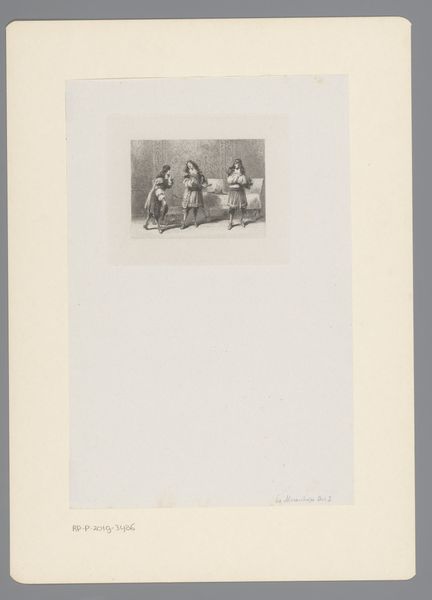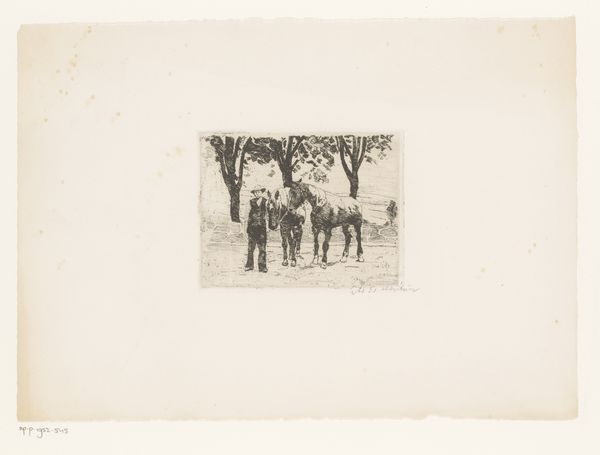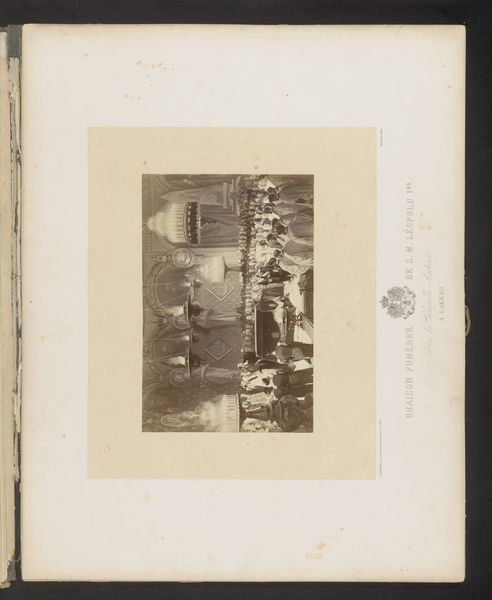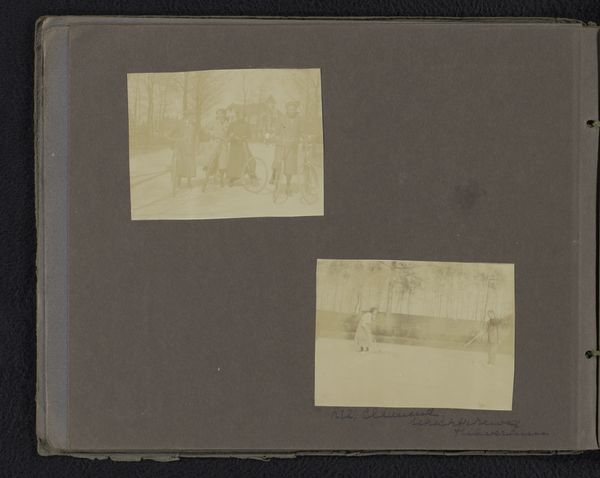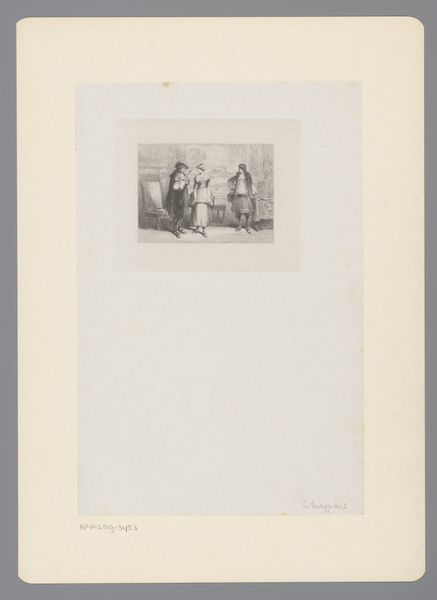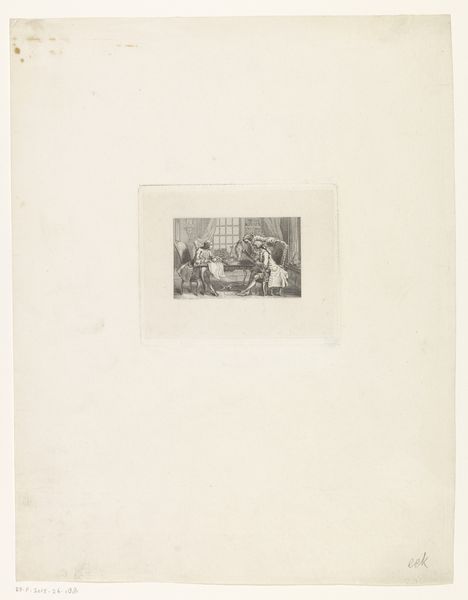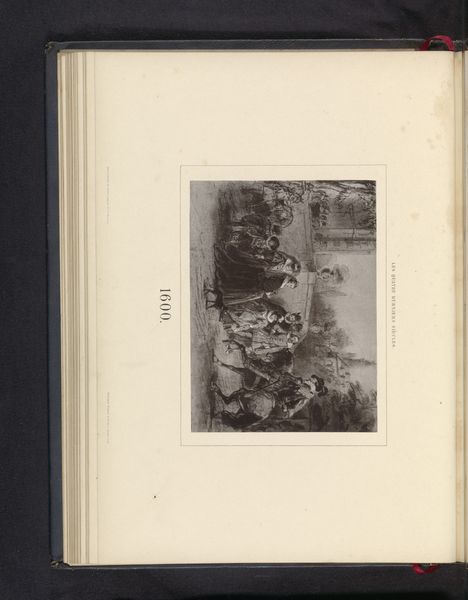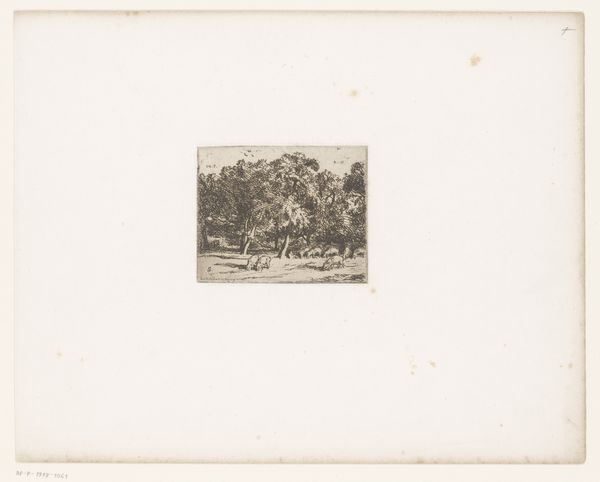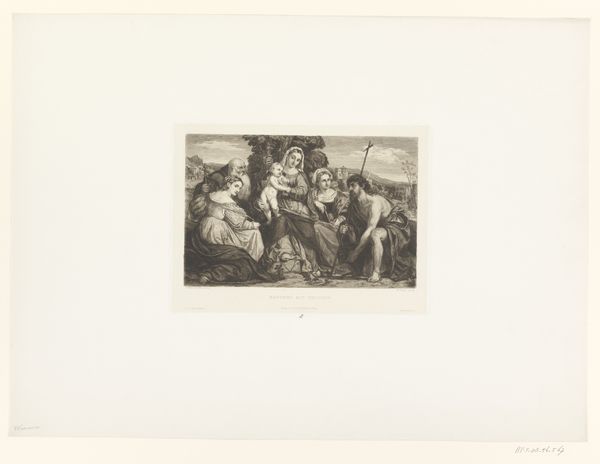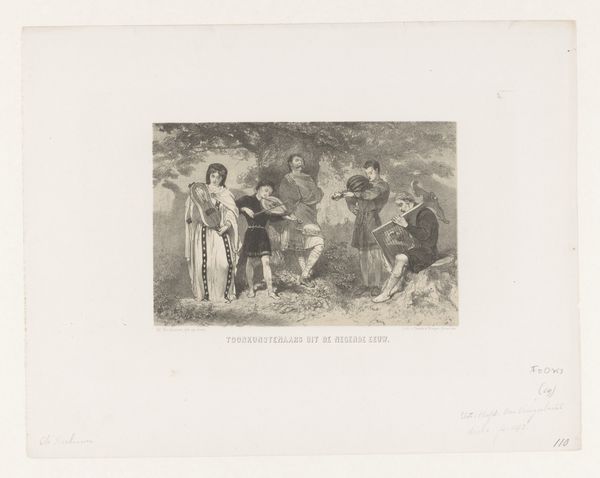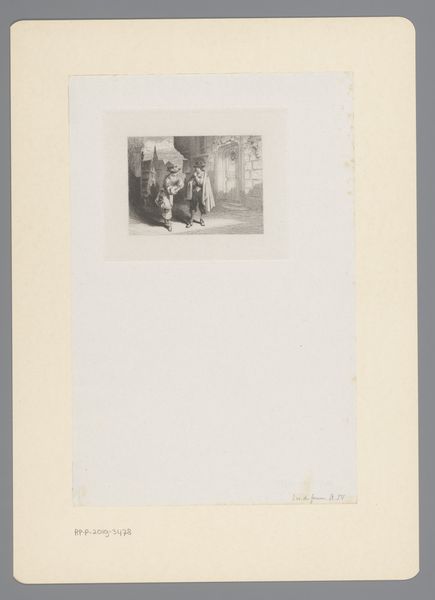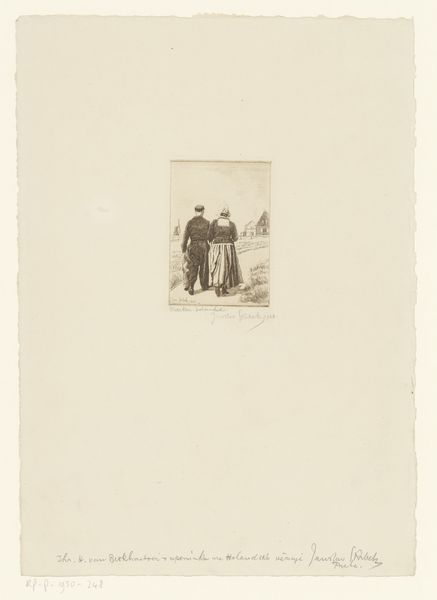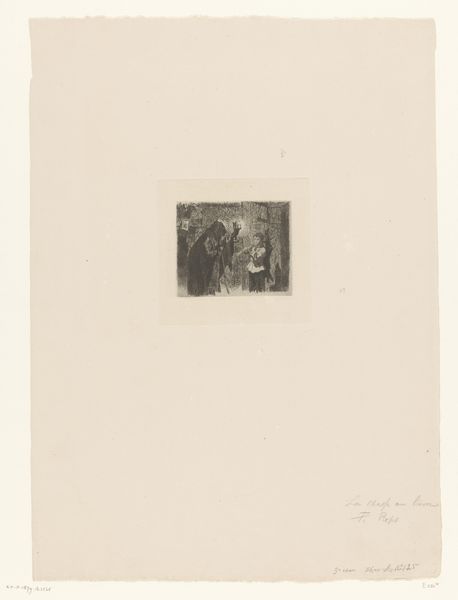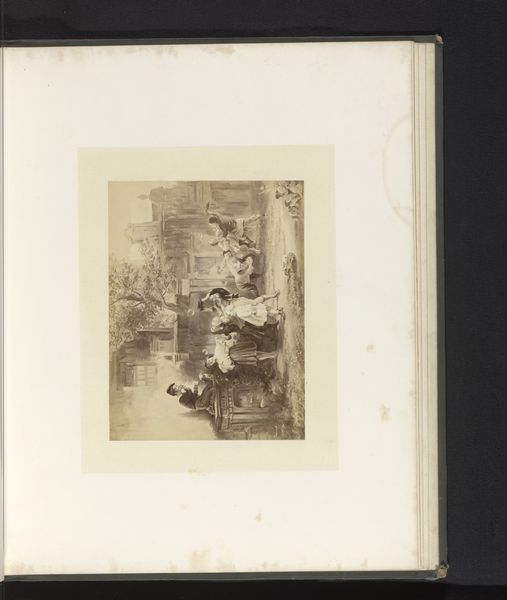
drawing, print, etching, paper
#
drawing
# print
#
etching
#
landscape
#
paper
#
genre-painting
Dimensions: height 79 mm, width 108 mm
Copyright: Rijks Museum: Open Domain
Curator: This print by J. Ursel from 1875, aptly titled "Two Coachmen by a Carriage," presents a rather understated scene, doesn't it? Editor: It does, quite modest, nearly melancholic, perhaps; it definitely conveys a sense of weary stasis with those drooping horses. The light and shadow play across the forms seems quite muted, as if even time is slowing down. Curator: Indeed. Let’s consider the structure, though. Ursel has used etching here, a printmaking technique that allows for a fine level of detail, albeit in a monochrome palette. Note how the spatial organization relies on a somewhat minimalist composition, directing the eye primarily to the human figures juxtaposed with the animal element of horses, bound together by that technological innovation we know as the carriage. Editor: That pairing is striking—men, horses, machine. I am immediately thinking about status, power, the control of nature—symbols that stretch back millennia. Horses themselves were deeply coded in the collective imagination well before mechanisation began to alter societies’ relation to them. Look how diminished in size those coachmen are relative to the composition! Curator: An interesting reading, particularly considering the class implications inherent in such displays of wealth at the time. What fascinates me from a more purely visual point of view is how the stark white paper both isolates and integrates the representational forms, serving almost as an abstract grounding that prevents this tiny image from collapsing into a purely anecdotal genre painting. The texture of the paper stock contributes to that, doesn't it? Editor: Certainly. I notice the very dark coloration given to the people: there are very stark contrasts between these tiny figures and their supposed social betters who would travel in the carriage they drive. That feels deliberate, a potential, quite subtle, commentary from the artist. Curator: Yes, I suppose one could read those sharp contrasts in value that way. In purely formal terms, I'd suggest the contrasting tones simply function to separate out the spatial planes and focus attention toward the scene's heart. Ultimately it serves as a study in restrained, balanced design within very narrow artistic boundaries. Editor: I am leaving with this strong feeling of constraint—on the coachmen, yes, perhaps on Ursel, but it is undeniably affecting. The emotional dimensions held within those etch marks seem, somehow, immense. Curator: A suitably evocative parting thought on a very concise, careful etching from the late nineteenth century.
Comments
No comments
Be the first to comment and join the conversation on the ultimate creative platform.
